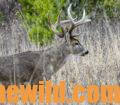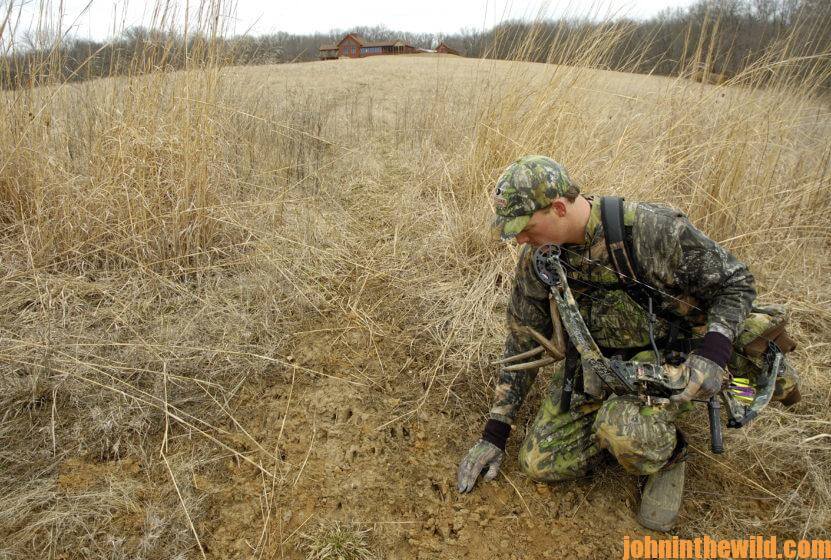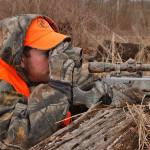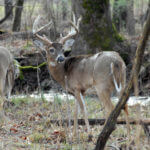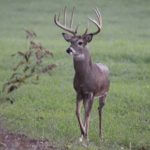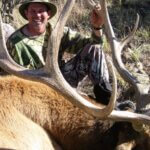Editor’s Note: Through the years in any hunting camp I’ve been in, a track expert, who can tell the size, sex and age of a deer by its tracks, always has been in residence. I’ve stalked deer before that the width of their tracks has convinced me they’re bucks. Also I’ve had hunters tell me that seeing the dew claws as part of the deer track is a definite indication that the animal that has made the track is a buck. Because so much misinformation exists about deer tracks, and what information they can communicate to those of us who hunt, I’ve talked to wildlife biologists and avid deer hunters to learn the truth about deer tracks.
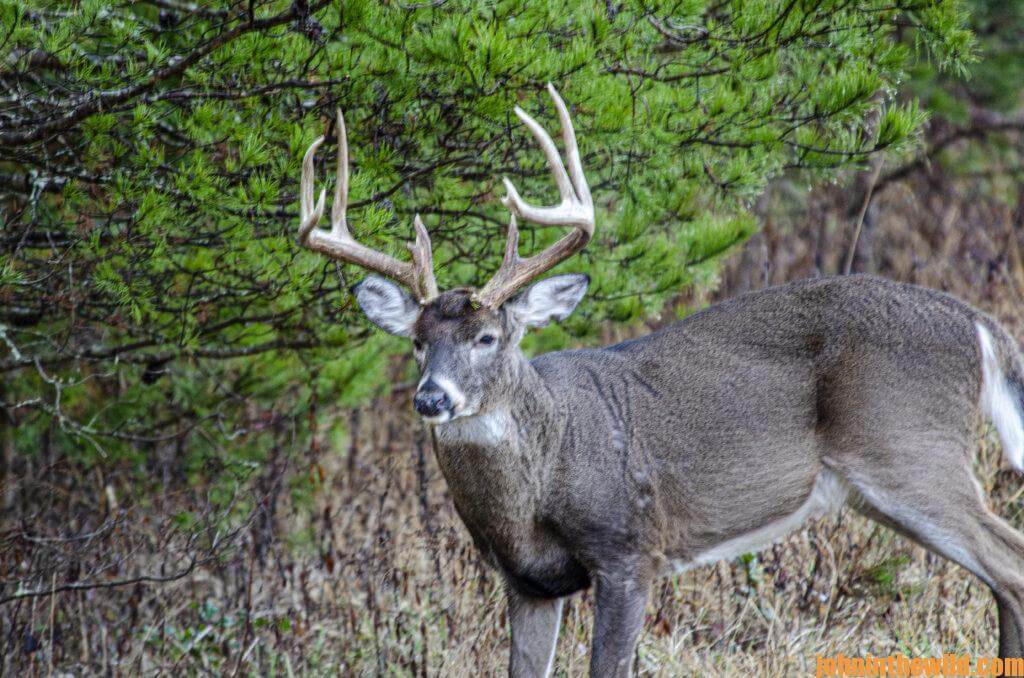 The biologists and hunters I’ve talked with all have said that the size of the doe’s tracks often will be determined by the management program being conducted on the lands where you’re hunting. In much of the East, more older does are in the deer herds than in states like Texas, which have been managing deer intensively for numbers of years. According to Jacobson, longtime deer biologist, sometimes deer populations are so badly managed that hunting pressure eliminates a large majority of the bucks, whereas the does are treated like the sacred cows of India, allowed to put on heavier body weights and reach much-older age classes than the bucks do. “That’s why often a doe’s track will be bigger than a buck’s track in areas where the deer herd contains does that are older than the bucks.”
The biologists and hunters I’ve talked with all have said that the size of the doe’s tracks often will be determined by the management program being conducted on the lands where you’re hunting. In much of the East, more older does are in the deer herds than in states like Texas, which have been managing deer intensively for numbers of years. According to Jacobson, longtime deer biologist, sometimes deer populations are so badly managed that hunting pressure eliminates a large majority of the bucks, whereas the does are treated like the sacred cows of India, allowed to put on heavier body weights and reach much-older age classes than the bucks do. “That’s why often a doe’s track will be bigger than a buck’s track in areas where the deer herd contains does that are older than the bucks.”
 Although some hunters believe they can tell the size of a deer’s rack, the age of the deer, the weight of the deer and other physical characteristics from animals’ tracks, Charles DeYoung, once a professor at Texas A&M, who still does deer research, mentions that you can note some general characteristics about deer if you see their tracks side by side, particularly if one track is a fawn’s and the other a buck’s, but, “Generally you can’t determine this, unless you’re an Apache.”
Although some hunters believe they can tell the size of a deer’s rack, the age of the deer, the weight of the deer and other physical characteristics from animals’ tracks, Charles DeYoung, once a professor at Texas A&M, who still does deer research, mentions that you can note some general characteristics about deer if you see their tracks side by side, particularly if one track is a fawn’s and the other a buck’s, but, “Generally you can’t determine this, unless you’re an Apache.”
 Well-trained scientific eyes like those of biologists may be able to detect some physical characteristics from the animal’s track that the average hunter may not be able to see.
Well-trained scientific eyes like those of biologists may be able to detect some physical characteristics from the animal’s track that the average hunter may not be able to see.
“You can determine if a deer has a broken leg or not, because the track of the broken leg will be smeared and will make a different impression than the other three tracks of the same animal,” one biologist observes. “However, determining that a deer is very light because of parasites or disease is difficult. If the deer is feverish and taking very-short steps, we may be able to determine his poor physical condition, particularly if the animal is walking in a good tracking medium like soft earth or mud. If the deer is very cold and walking stoop-shouldered, he may be taking smaller, shorter, choppier steps, which you also may be able to detect.”
A deer biologist can make this type of evaluation about a deer’s track because he’s a scientist who has spent many years studying deer and the tracks they leave. However, the average hunter will be hard-pressed to make these types of judgement calls from the tracks he sees in the woods.
 To learn more about hunting deer, check out John E. Phillips’ book, “How to Hunt and Take Big Buck Deer on Small Properties,” available in Kindle, print and Audible versions at (http://amzn.to/1vIcj4m).
To learn more about hunting deer, check out John E. Phillips’ book, “How to Hunt and Take Big Buck Deer on Small Properties,” available in Kindle, print and Audible versions at (http://amzn.to/1vIcj4m).


